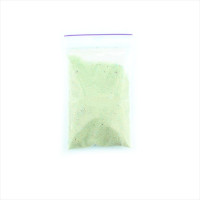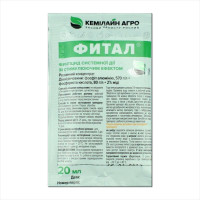Black sesame / Sesamum
This is an annual plant 60-150 cm high. The root is taproot, 70-80 cm long, branched in the upper part, thick. Stem erect, green or slightly reddish, 4-8-sided, pubescent, rarely glabrous, usually branched from the very base; branches of the second order are rarely formed.
Leaves are alternate, opposite or mixed. The leaves are pubescent, smooth or corrugated, 10-30 cm long, long-petiolate. The leaf blade varies greatly in different forms and within the same plant. The lowermost leaves are usually round, whole-ray; medium - lanceolate, elliptical or oblong-ovate, entire, serrated, incised or deeply, palmately separate.
The upper leaves are narrow, entire. The flowers are large, up to 4 cm long, almost sessile, located in the axils of the leaves, 1-5 pcs. Calyx 0.5-0.7 cm long, symbiotic, with 5-8 elongated lobes, green, densely pubescent. Corolla two-lipped, pink, white or purple, densely pubescent, 1.5-3.8 cm long. Upper lip short, 2-3-lobed; the lower one is longer, 3- and 5-lobed. The stamens, 5 in number, are attached to the lower part of the corolla, of which 4 are normally developed, the 5th is underdeveloped. Less often there are 10 stamens. Pistil with upper 4-9-celled, strongly pubescent ovary.
Black sesame seeds are unpeeled (unpolished) seeds that have a sharper taste and aroma than white sesame seeds. Black sesame has a more pleasant nutty flavor and aroma.
The fruit is an oblong, pointed at the top, green or slightly reddish, strongly pubescent 4-9-cell box, 3-5 cm long. Seeds are ovoid, flat, 3-3.5 mm long.
Flowering in June-July, fruiting in August-September. Seeds are used from which sesame oil is obtained.
The content of nutrients and composition of sesame
Basically, almost all plant seeds contain some kind of latent energy, which is used as a source of growth for a young plant in the first phase of its life. The seeds contain fatty oil (up to 60%), which includes glycerides of oleic, linoleic, palmitic, stearic, arachidic and lignoceric acids; phytosterol, sesamin (chloroform), sesamol, sesamolin, vitamin E, samol.
According to other sources, sesame oil mainly consists of triglycerides, light unsaturated oleic acid (35-48%), linoleic acid (37-48%), in addition, about 10% saturated fatty acids: stearic (4-6%), palmitic ( 7-8%), as well as myristic (about 0.1%), arachidic (up to 1.0%) (iodine number 110). Due to the strong antioxidant properties - sesamol (oxyhydroquinone methyl ester) was found in sesame oil, and the absence of triple unsaturated fatty acids, sesame oil has a long shelf life. Sesame seed is rich in calcium, vitamins B1 and E and polyunsaturated fatty linoleic acids.
Sesame seeds contain about 50-60% fatty oil, its composition is characterized by two lignins - sesamin and sesamolin (about 300 ppm in oil), which are converted into phenolic antioxidants - sesamol and sesaminol during refining. Sesame oil is a food product equivalent to other vegetable oils, but vitamin A and little vitamin E are found in it.
Oriental sesame oil owes its scent to several compounds that are only formed during the roasting process. The main ones are 2-furylmethanethiol, which also plays an important role in the aroma of coffee and baked meat, guaiacol (2-methoxyphenol), phenylethanethiol and furaneol, as well as vinyl guacol, 2-pentylpyridine, etc.
The use of sesame
Sesame seed is one of the oldest spices. Today it is not known for certain for what main purpose they decided to cultivate sesame using its beneficial properties, and this is, first of all: extremely healthy vegetable oil, the content of a large amount of nutrients in the seeds, or because the change of sesame is just very tasty. All these qualities fanned sesame with secrets and legends.
For example, the Assyrians still believe that their gods drank wine from sesame seeds before the creation of the world, while the Egyptians do. Sesame is the main seasoning for all dishes. And not in vain, another name for sesame is the word "sesame", said the robbers who pursued Ali Baba in order to open a cave with countless treasures. In ancient Babylon, sesame was a symbol of immortality and was considered the food of the gods. Obviously, while sesame will not provide immortality, it is capable of prolonging life and maintaining good health.
Black sesame seeds have a stronger and more persistent flavor than white sesame seeds. They have a peculiar unique nutty, sweet smell, which is greatly enhanced by roasting. Due to this property, black sesame seeds in the countries of the Middle East are mainly used for sprinkling products during baking; not a single cake is complete without sesame. Also, sesame is used to obtain various seasonings and sauces.
One of the main uses of sesame is to obtain oil from its seeds, so it is one of the most important oilseed crops. Sesame oil is produced in various forms from refined to hard cold pressed. One of the main advantages of this oil is that it is good and long-lasting. Different countries of the world have their own ways of obtaining and consuming sesame oil. For example, cold-pressed dark sesame oil is not suitable for frying and is mixed with refined oil.
Koreans skillfully use sesame leaves, the taste of which is quite hot. Fresh, they are served at the table with vegetables, sauces are prepared, fried in batter. The Japanese use sesame leaves to make their famous sushi, wrapping rice and vegetables in them.
Sesame salt is a mixture of ground toasted sesame seeds and salt. For a cup of seeds, 200 ml teaspoon of salt. Seasoning is ready. In Koreans, this is the main seasoning that is used instead of salt. Thus, Koreans receive the daily requirement of calcium.
The use of sesame in folk and official medicine is quite extensive. First of all, it is used as an effective remedy for the treatment of diathesis, including hemorrhagic. It promotes better blood clotting. It is used for the preparation of ointments, emulsions, patches, used to improve the functioning of the gastrointestinal tract and as a laxative.
Sesame, having entered the human body in any form, strengthens bone tissue, nails, teeth, stimulates the functioning of the musculoskeletal system. It is extremely necessary for women during lactation and pregnancy, and for children during their intensive growth and during the period of changing teeth. It is recommended, especially for women over 40, with arthrosis, acute arthritis, osteochondrosis, osteoporosis.
A large amount of vitamins B and E in sesame, as well as linoleic acid, when ingested, increases the number of platelets in the blood, improving its clotting, helping to improve blood flow, rapid healing of wounds and fractures. The high nutritional value of sesame significantly helps those suffering from dystrophy and workers with increased physical exertion.
The use of sesame in cooking
Used to add texture and flavor to a variety of breads, buns, crackers and salad dressings.

No questions about this product, be the first and ask your question.
















